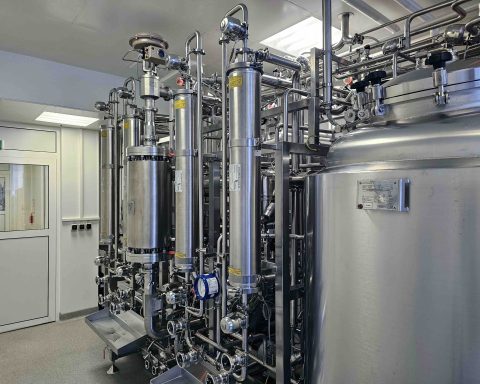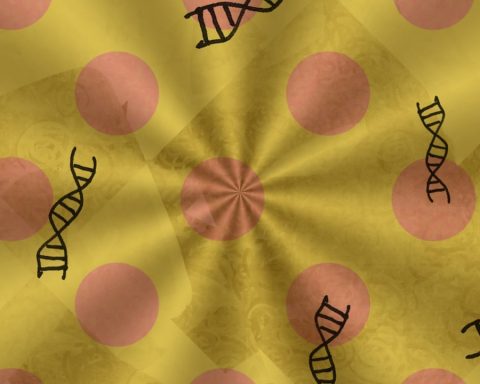Prefilled syringes have been developed as a favored setup for parenteral drug administration as these syringes make it more efficient and easier to handle drugs and escalate dosing accuracy.
As biopharmaceuticals are on the rise, the ongoing boom in demand has endorsed the growth of the prefilled syringes market. Simultaneously, other pre-sterilized types of packaging are also on the upswing, producing new challenges for pharmaceutical houses. Machine manufacturers are hastening to offer novel and more flexible solutions capable of bestowing innovative results.
When compared with conventional packaging, prefilled syringes offer better ease of use and more precise dosing. Modern prefilled syringes also facilitate condensed product loss, which is the most important advantage when it comes to expensive biopharmaceuticals. For instance, these favorably individualized products that are used to treat autoimmune disorders can be best directed in a liquid form using prefilled syringes.
Automation to Define Product Quality
Today, manufacturing has become more automated than ever and manual handling, which is the main cause of particulate and bacterial contamination, has reduced considerably. The fully automated opening of prefilled syringe packages has been a standard requirement for new filling lines.
Moreover, isolators are becoming increasingly common in the process of prefilled syringes for consistently separating the aseptic area from its surroundings.
The in-process controls (IPC) play an important role in further improving the quality of prefilled syringes particularly in the filling process. Currently, the spotlight is on defining the fill weight and on observing the existence of the stopper.
There is possibly more importance in additionally inspecting the quality of the packaging directly before filling. Some of the questions that should be asked regarding the quality of the packaging are: Is the silicone seal intact? Is the safety cap present and still in the correct position? And if the answer is no, defective prefilled syringes can be sorted out prior to the filling process, consequently reducing product loss.
Along with flexible handling units, the highly automated filling machines allow prefilled syringes to be specifically detached from the nest. Subsequently, individual prefilled syringes can be fed into a unified inspection station.
Moreover, there are methods to test the thickness and distribution of the silicon layer within the prefilled syringes, thus confirming the efficiency of the stopper to glide efficiently, which is an important factor for prefilled syringes used in auto-injectors.
Several Methods in Filling and Closing
Single-use filling systems in connection with prefilled syringes are progressively being discussed in the pharmaceutical industry. This approach does away with the need to clean and validate the components that come into contact with prefilled syringes, which is especially cost-intensive for biotech products.
In this regard, peristaltic pumps are enjoying renewed popularity, as they never directly touch the materials to be filled. This also considerably improves the availability of the machine, as there is no need for time-intensive cleaning or sterilizing processes (CIP/SIP).
After the filling process is accomplished, a vent tube is used to close the prefilled syringes with a stopper. Coated stoppers are now becoming increasingly common due to the biotech boom; however, their coating makes them less suited for this method.
An alternative is offered by vacuum stopper insertion i.e. by sucking the stopper into its place, a vacuum is created inside the prefilled syringes. Though this more complex approach compresses the stopper to a minor extent, it does not allow the stopper to be placed as precisely as with the vent tube insertion method.
New Packaging Types on the Upswing
With prefilled syringes being increasingly in demand, limitless new projects not just for small batches, but also for high output lines are based on pre-sterilized syringes. The other pre-sterilized packaging types are slowly but certainly turning from niche products into engaging alternatives for pharmaceutical companies. Manufacturers of primary packaging are now contributing to this change.
The maximum difference is made between tray and nest systems. Trays are particularly intended for use with standard bulk filling machines, while nests can generally be used for prefilled syringes processing with machines, including automated bags and tub openings. Yet some modifications may be required, depending on the packaging material, structure and geometry of prefilled syringes.
Pre-sterilized packaging types is another aspect that is now being diligently discussed. However the e-beam has long been a regular solution for cleaning tubs in high output lines with isolators, and it is usually considered too big for smaller lines. The alternatives that are currently being explored have been listed below:
- Locks or tunnels used in combination with plasma
- UV light
- Nitrogen dioxide
- Hydrogen peroxide
However, there is still no standard method established for prefilled syringes. A sterilized transfer is possible with restricted access barrier systems (RABS).
The more packaging types available on a single machine, the more space-saving it is for users. This is possible thanks to the new combination of machines for flexible processing of several types of primary packaging. There is no need for a second machine after assimilating both filling and capping stations in a single unit.
Moreover, compatibility with several filling systems is a requirement for a new filling and closing machine. In this regard, combi-filling stations, which can be easily reconfigured to accommodate a diverse array of filling systems without taking up more space, have quickly proven their value.
Higher Efficiency, More Individualization
Given that biopharmaceutical drugs are costly, efficient filling methods are a priority and the latest filling technologies deliver almost complete product yield. In light of individualization of products being the current industry trend, more specific flexible solutions are creating a new significance for prefilled syringes.
Certainly, clinical studies require the highest possible flexibility in a very compact space, which can be achieved by combining manual, partly and fully automated processes with different packaging types. In this case, it can either be manual or semi-automated so as to assist the new variety of packaging types, particularly with regard to outer packaging.
Making sure that individual work steps can be adapted to future types of packaging, the use of robots is advisable for filling or transporting packages. Also, adding a reserve station in the future is also worth considering.
Widespread Line Concepts
Depending on the respective area, region or company size, pharmaceutical producers’ expectation from their systems or lines can vary significantly. Still, all the producers share the same focus to ensure the best possible protection for their products and their machine operators. New filling and closing machines are characterized by a high degree of automation and equipped with either RABS or isolators.
Content Contributor







